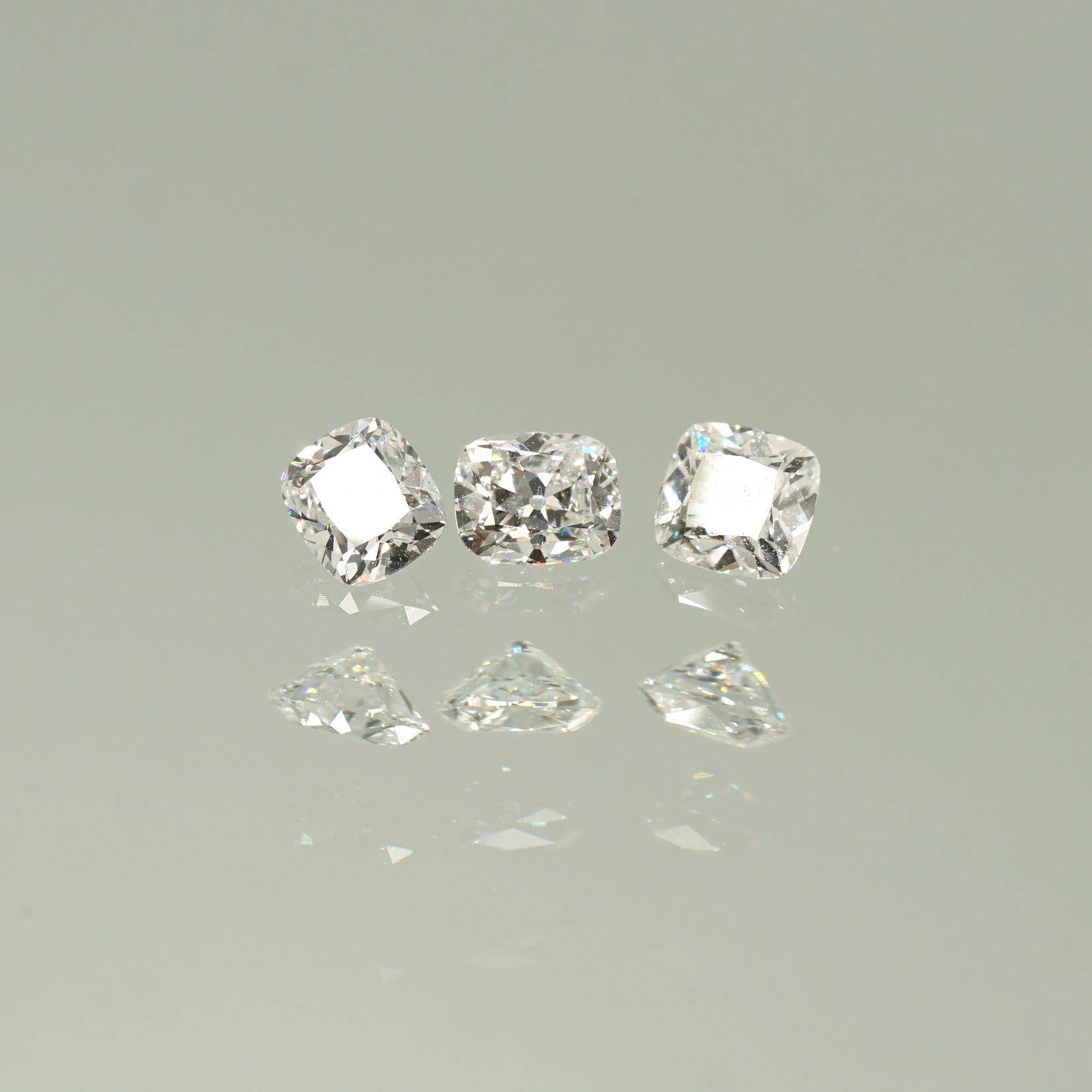Old-cut diamonds, also referred to as antique cut diamonds or vintage diamonds, are a fascinating glimpse into the world of diamond cutting before modern techniques took center stage. These handcrafted gems, predominantly from eras predating the 20th century, possess distinctive features that distinguish them from their contemporary brilliant-cut counterparts. Let’s delve deeper into the allure of old-cut diamonds:
Facet Pattern: Old-cut diamonds often boast fewer facets when compared to their modern brilliant-cut counterparts. Their larger facets exhibit a broader, more open facet pattern, adding to their unique charm.
Shape: These diamonds come in various shapes, including round, cushion, pear, and oval. However, they might not adhere to the standardized proportions seen in contemporary diamonds, offering collectors a diverse range of choices.
Culet: Many old-cut diamonds showcase a visible culet, a flat facet at the diamond’s bottom tip. This differs from modern diamonds, which typically have a pointed culet.
Symmetry: Due to the manual cutting process employed in their creation, the symmetry of old-cut diamonds may not be as precise as that of their modern counterparts. This asymmetry contributes to their individual character.
Fire and Scintillation: Old-cut diamonds enchant with a distinct play of light, characterized by larger, more colorful flashes referred to as “fire.” This mesmerizing display sets them apart from modern brilliant cuts.
Character and History: Old-cut diamonds carry a unique charm and historical significance, reflecting the artistic and technological trends of the Victorian, Edwardian, and Art Deco eras when they were crafted. Each diamond tells a story of a bygone era.


Common old-cut diamond styles include the “Old Mine Cut” with its square or cushion shape and rounded corners and the “Old European Cut,” known for its round shape with a smaller table and taller crown than modern round brilliant diamonds.
Collectors and enthusiasts treasure old-cut diamonds for their vintage appeal, distinct characteristics, and the rich sense of history they embody. However, it’s essential to bear in mind that the value of old-cut diamonds can vary widely based on factors like size, quality, rarity, and historical provenance. When considering the purchase or valuation of an old-cut diamond, consulting with a reputable jeweler or gemologist with expertise in antique diamonds is highly advisable. Discover the timeless beauty and unique charm of old-cut diamonds – a testament to the craftsmanship of a bygone era.


